Sình Village is located in Phú Mậu commune, Phú Vang district, Thừa Thiên Huế province. The art of painting in the village emerged about 400 years ago and became famous in Huế and neighboring areas. In terms of folk paintings, Sình Village paintings can be compared to Đông Hồ paintings. However, the unique aspect of Sình Village paintings is that they are created for worship purposes and are burned after the rituals.
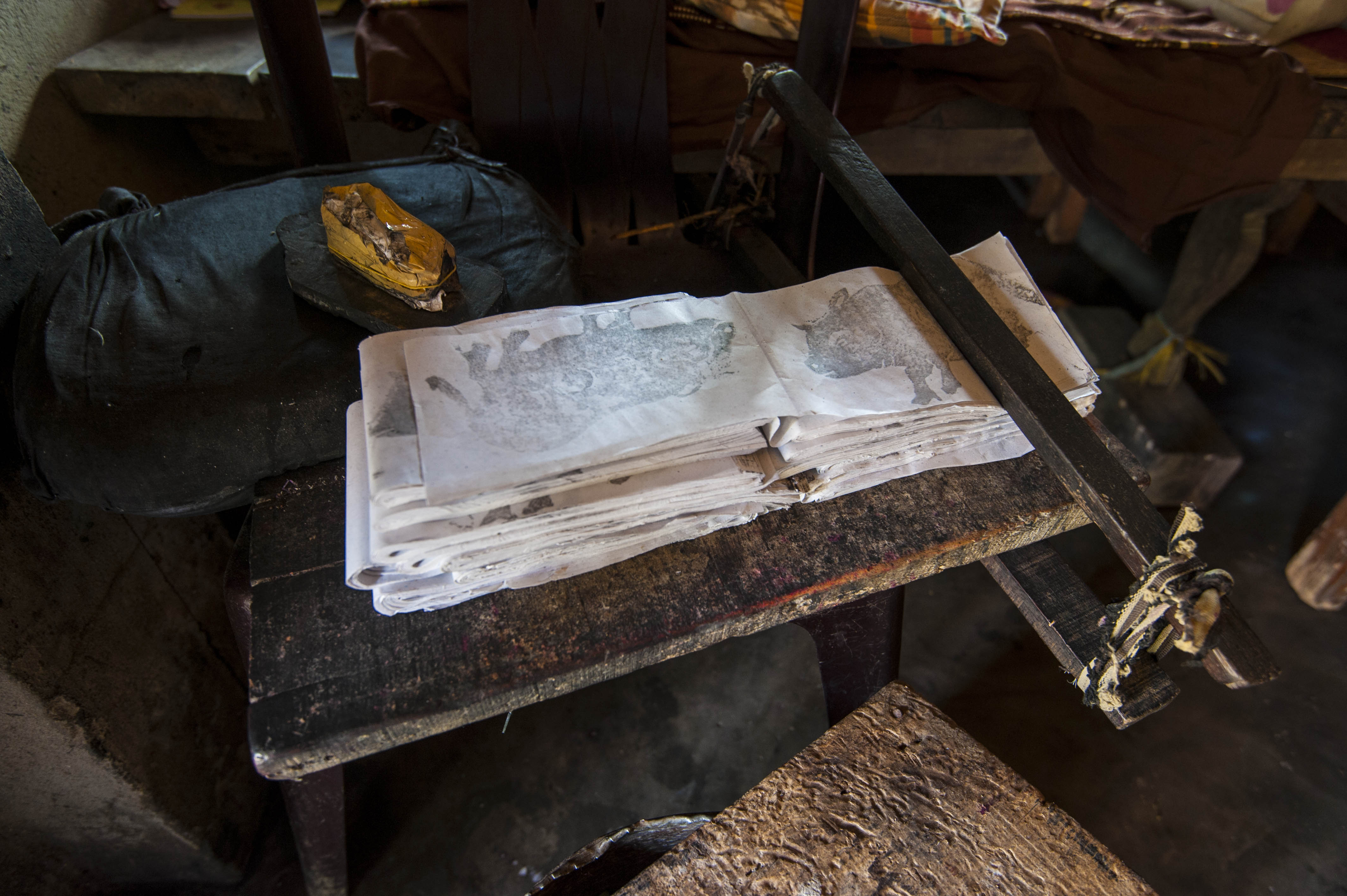
Sình Village paintings mainly serve religious beliefs and worship. The main character depicted in these paintings is the statue of the Mother Goddess, portrayed as a woman in colorful robes with two smaller attendants standing on either side. The Mother Goddess statue is divided into three types: pedestal statues, temple statues, and horizontal statues. These paintings are typically placed on dedicated altars for year-round worship. Additionally, Sình Village paintings include other types known as "con ảnh": paintings depicting men and women, and "phền" paintings portraying boys and girls (perhaps influenced by the lively style of Đông Hồ paintings). Other characters depicted in these paintings include Mr. Điệu, Mr. Đốc, and the Tờ bếp (possibly depicting the Kitchen Gods). These paintings are burned after the completion of the worship ritual.
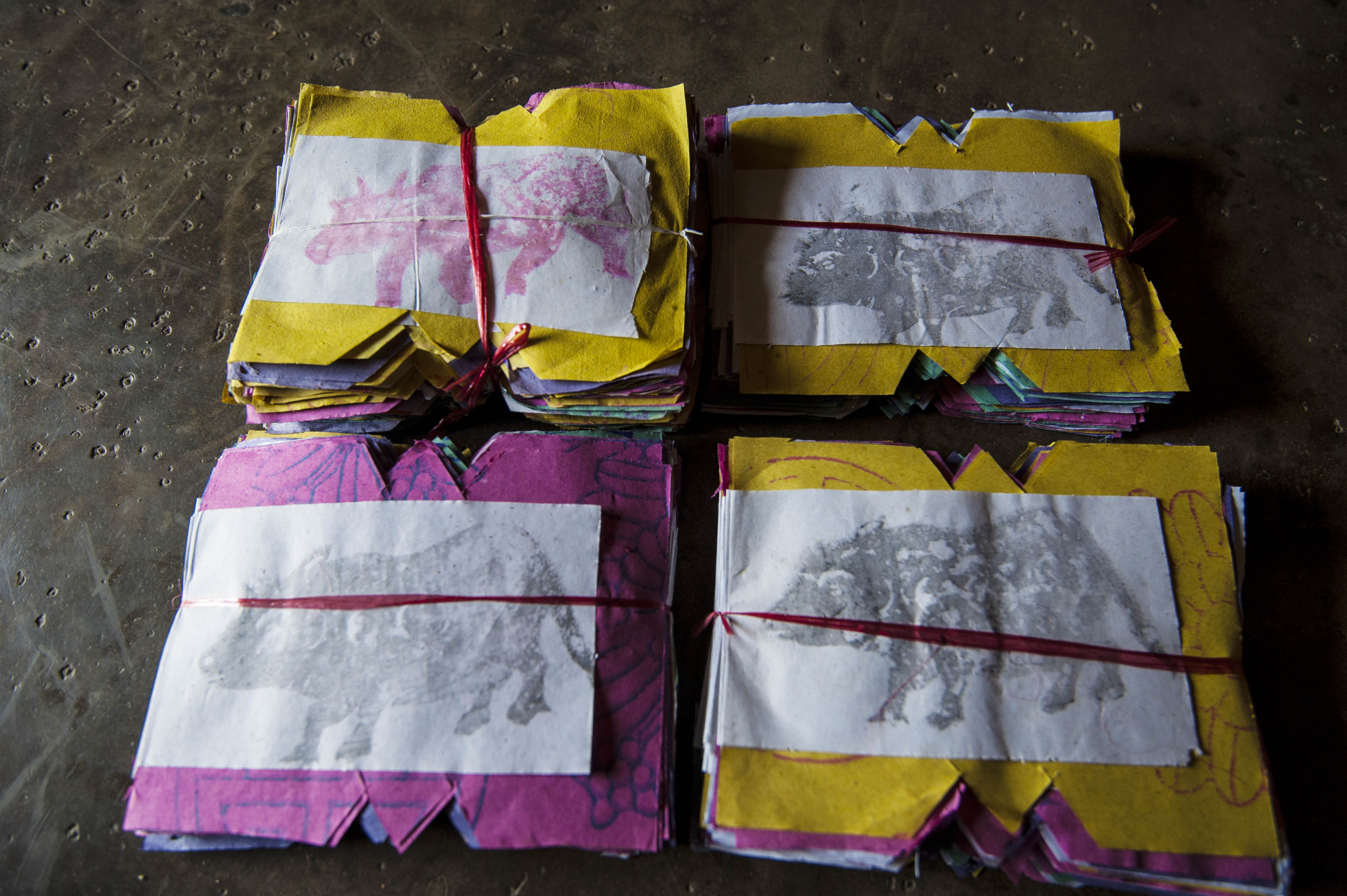
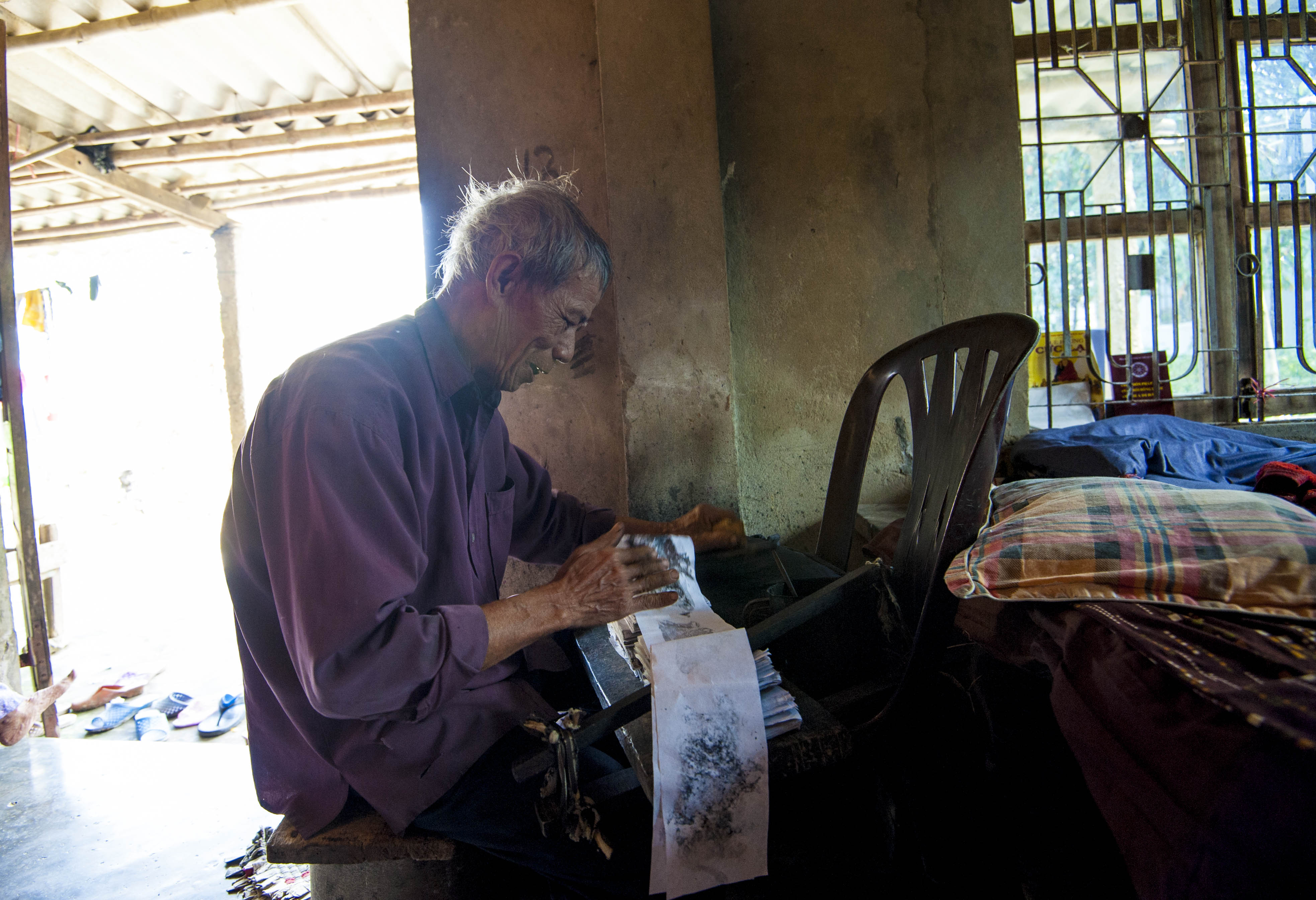
Objects depicted in paintings include garments, money, and tools to be burned for the deceased: garments for men, garments for women, military uniforms, money, bows, and arrows, and household utensils... typically depicted in small-sized paintings. Animal paintings (livestock, as well as elephants, tigers, and paintings of the twelve zodiac animals) are burned for the deceased.
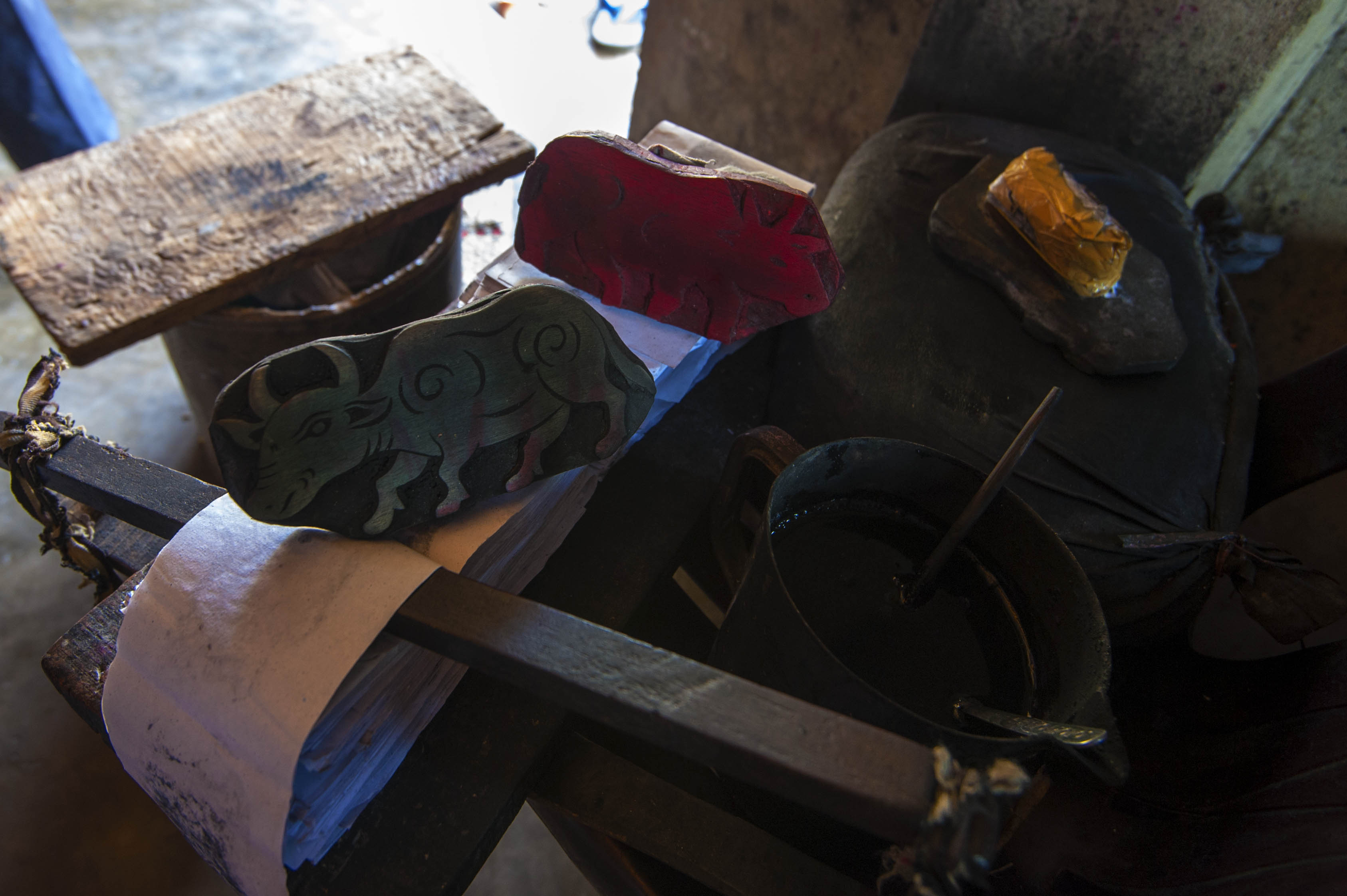
The paintings of Làng Sình can be compared to other folk painting styles from the northern region of Vietnam such as Đông Hồ and Hàng Trống, which were once widely circulated throughout the Thuận Quảng area. Therefore, the book Ô Châu Cận Lục, written in the 16th century, mentioned Lại Ân village as a prosperous place: "The Lại Ân hamlet, where roosters crow incessantly/Urge customers to buy one for a sale of ten..."
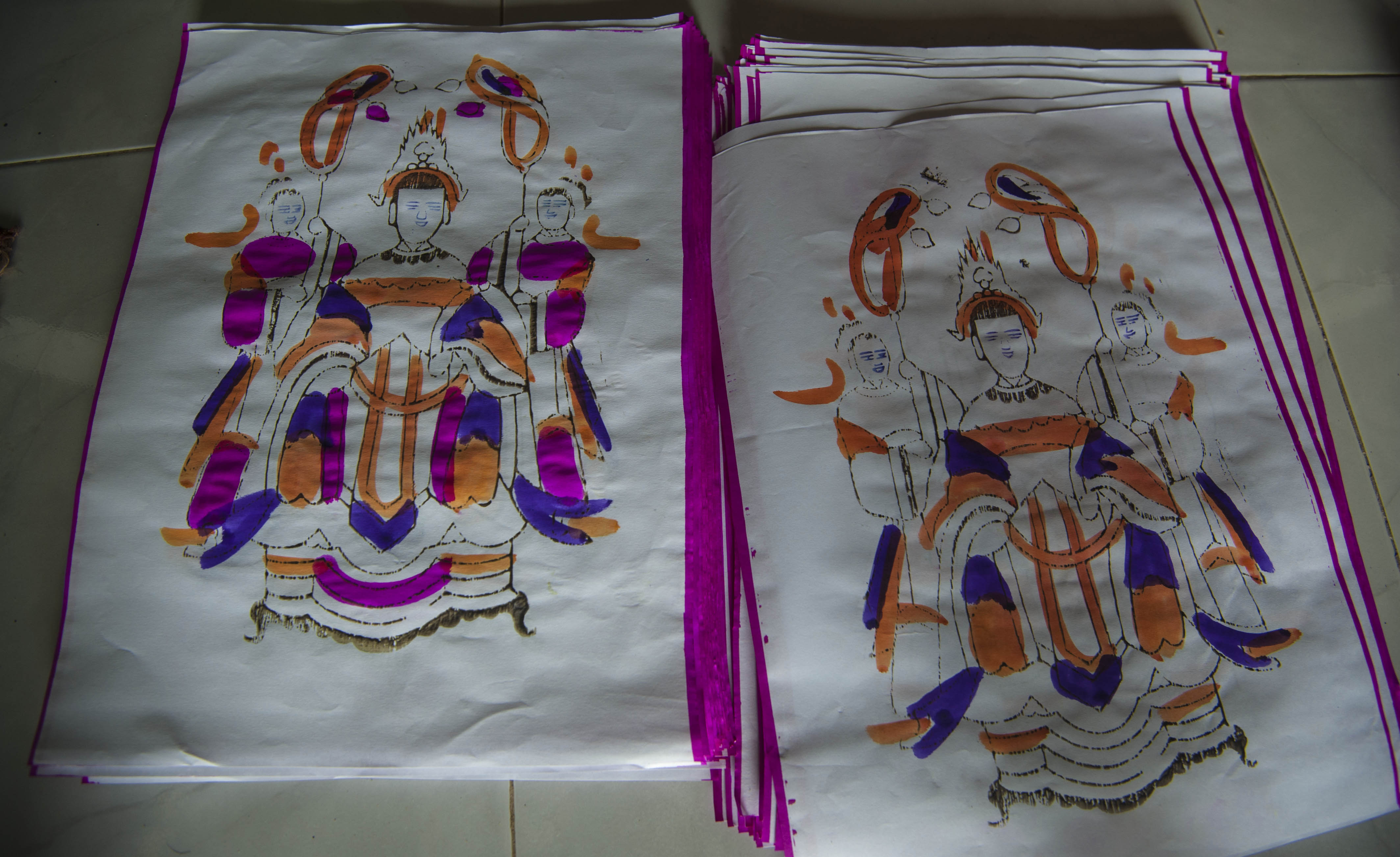
Alongside the Thanh Tiên paper flowers, for generations, during every Tet season and spring arrival, the paintings of Sình Village have significantly contributed to preserving the cultural and spiritual heritage of the people of Huế.
In these final days of the year, the people of Sình Village are busy creating vibrant paintings to serve the traditional Tet celebration of the community. Currently, there are about 30 households in Sình Village still deeply connected to this traditional craft. Adults engage in painting throughout the day, while children help their families with painting during their free time or after school.

Artisan Kỳ Hữu Phước, who has been devoted to the craft of painting in Sình Village for over 50 years, shared that the demand for paintings for worship purposes increases significantly every Tet season. According to local beliefs, using paintings for worship brings about many blessings in life. Therefore, Sình Village paintings not only supply the market in Huế but also attract customers from Đà Nẵng, Quảng Trị, Quảng Nam, and other places who come to order paintings for use during the Tet holiday.
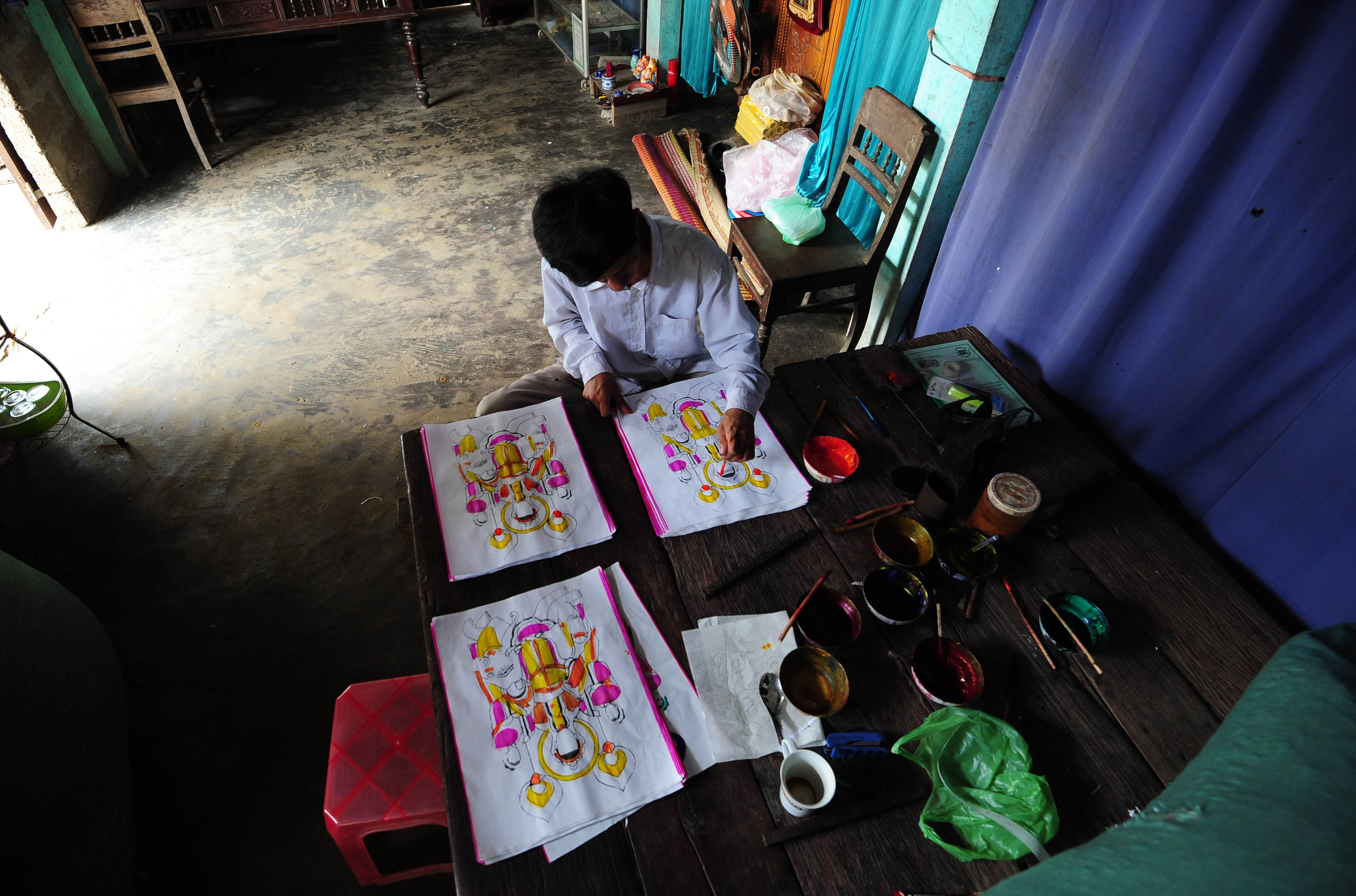
Regarding the process of making paintings, artisan Phước explained that creating a painting requires intricate techniques. The painting is printed on a wooden block and meticulously engraved. The paper used for printing the painting must be either dó paper or soaked rice paper. As for colors, they are derived from various materials such as seashells and various types of leaves. The process of creating a painting involves many stages, including scraping, grinding, soaking, preparing the paper, drying the paper, creating colors, carving the woodblock, printing the painting, and coloring. The coloring stage requires meticulousness and the quick-wittedness of the artisans from Sình Village.
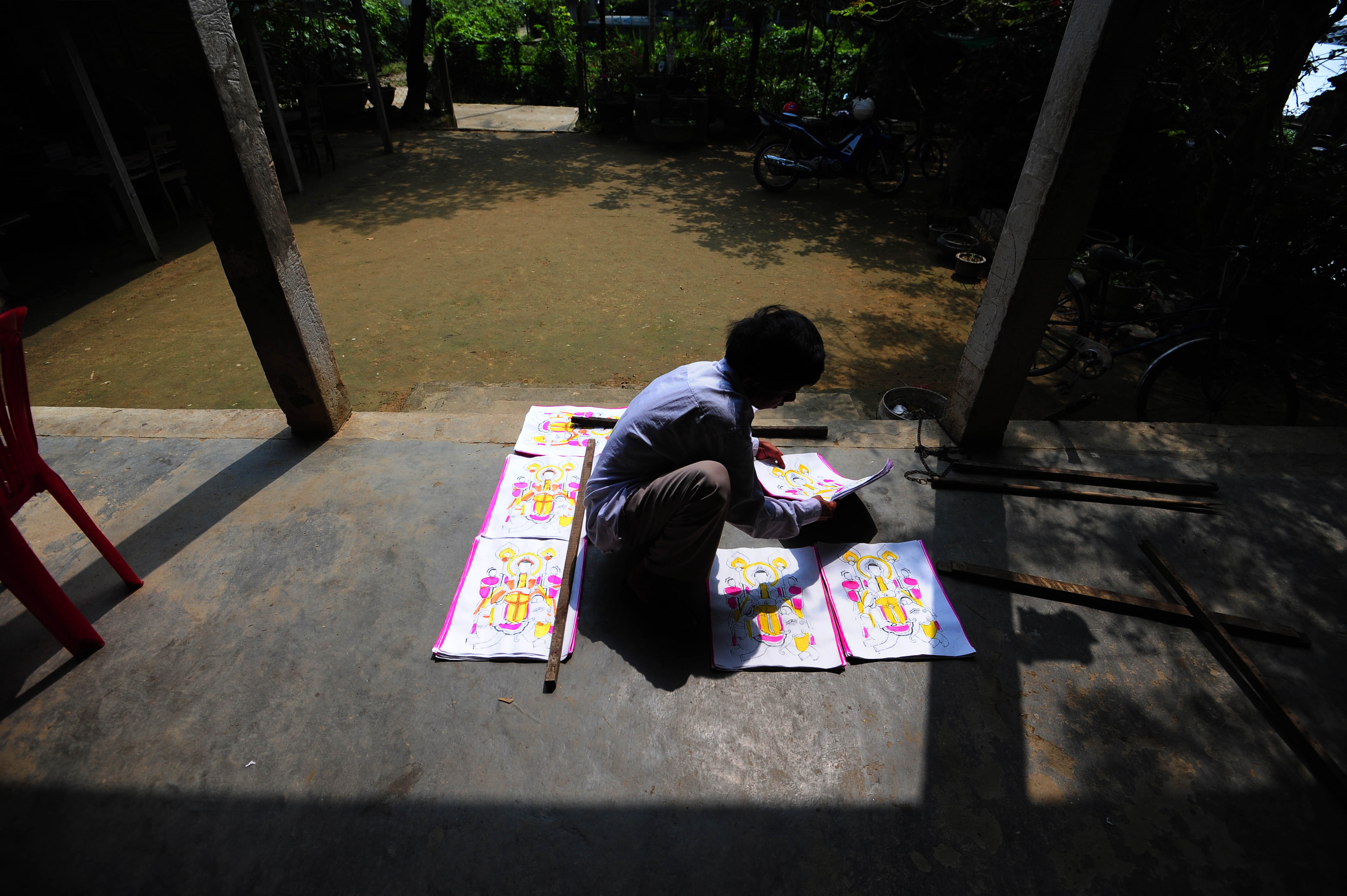

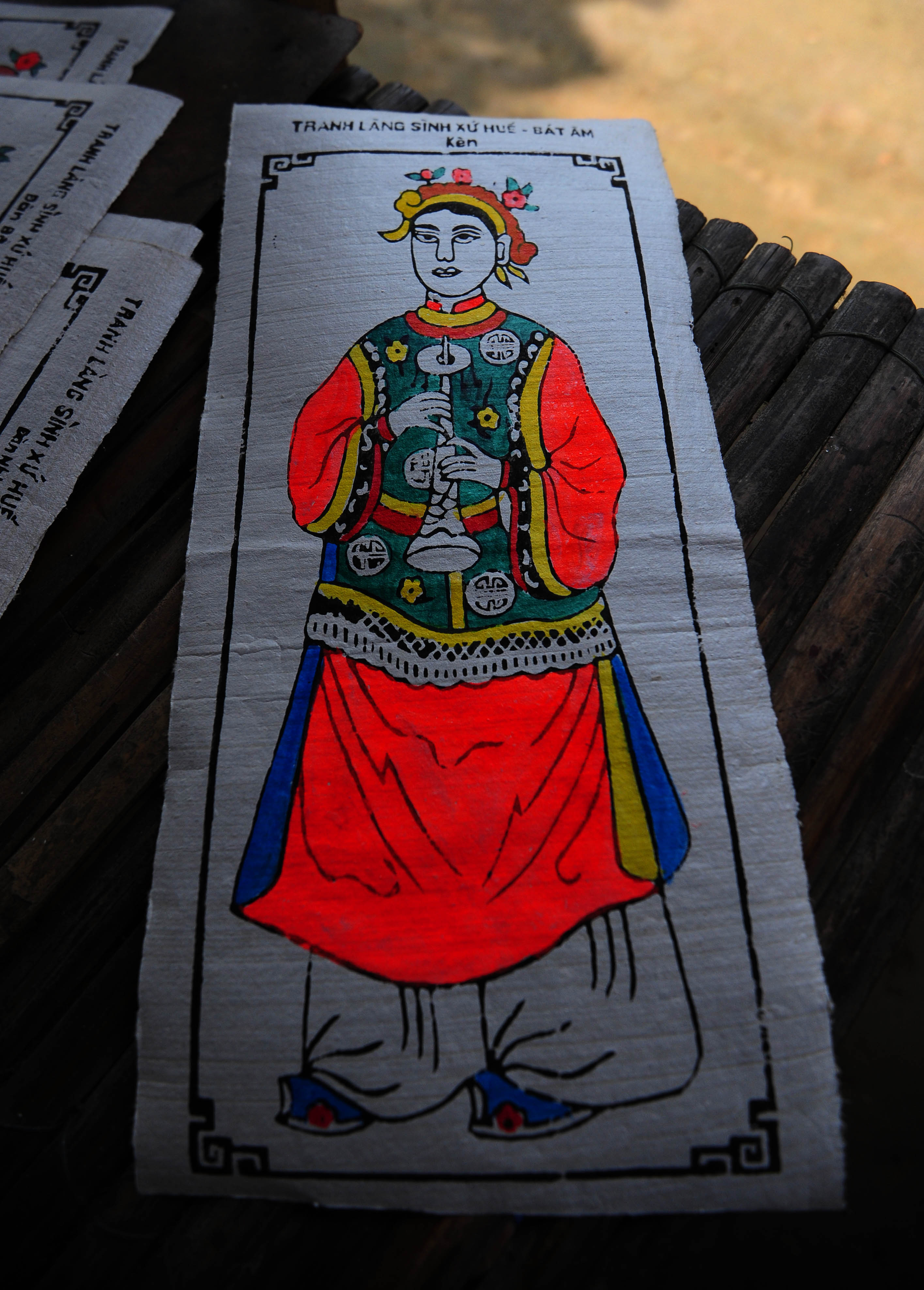
Visiting Sình Village the home of artisan Kỳ Hữu Phước on a late morning at the end of the year, the final paintings were completed and brought to the local market. The cultural essence of this craft village and its heritage need to be preserved and developed.